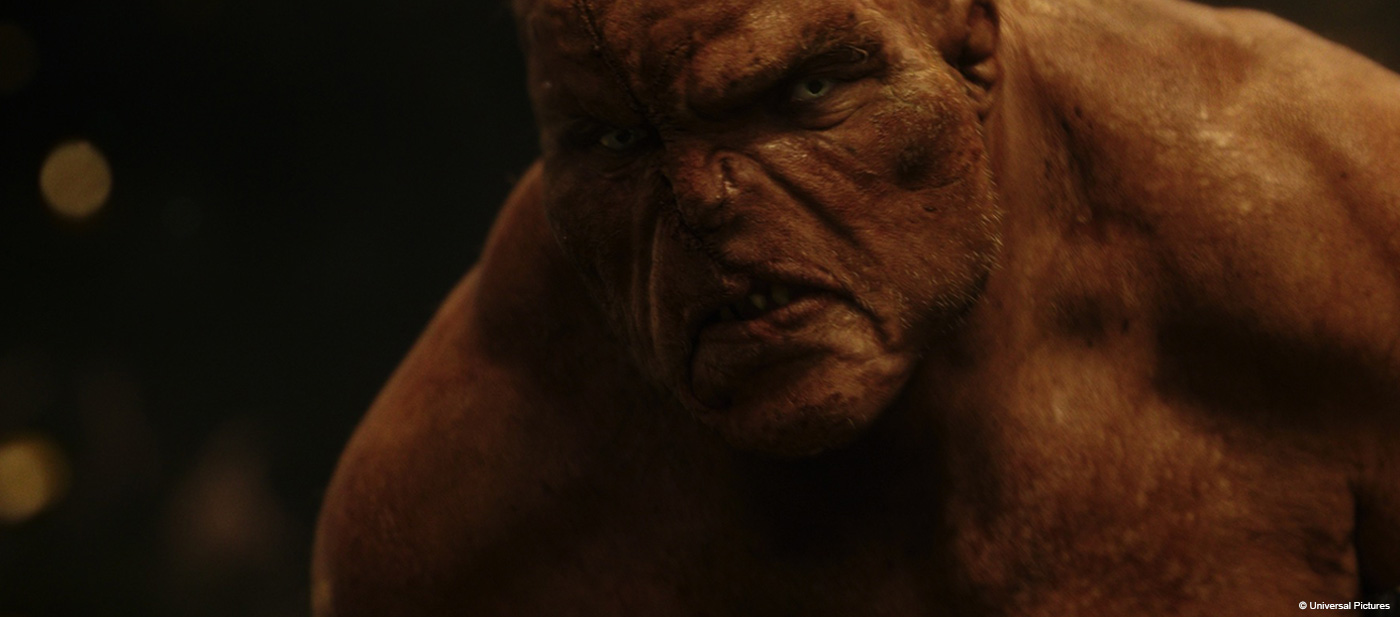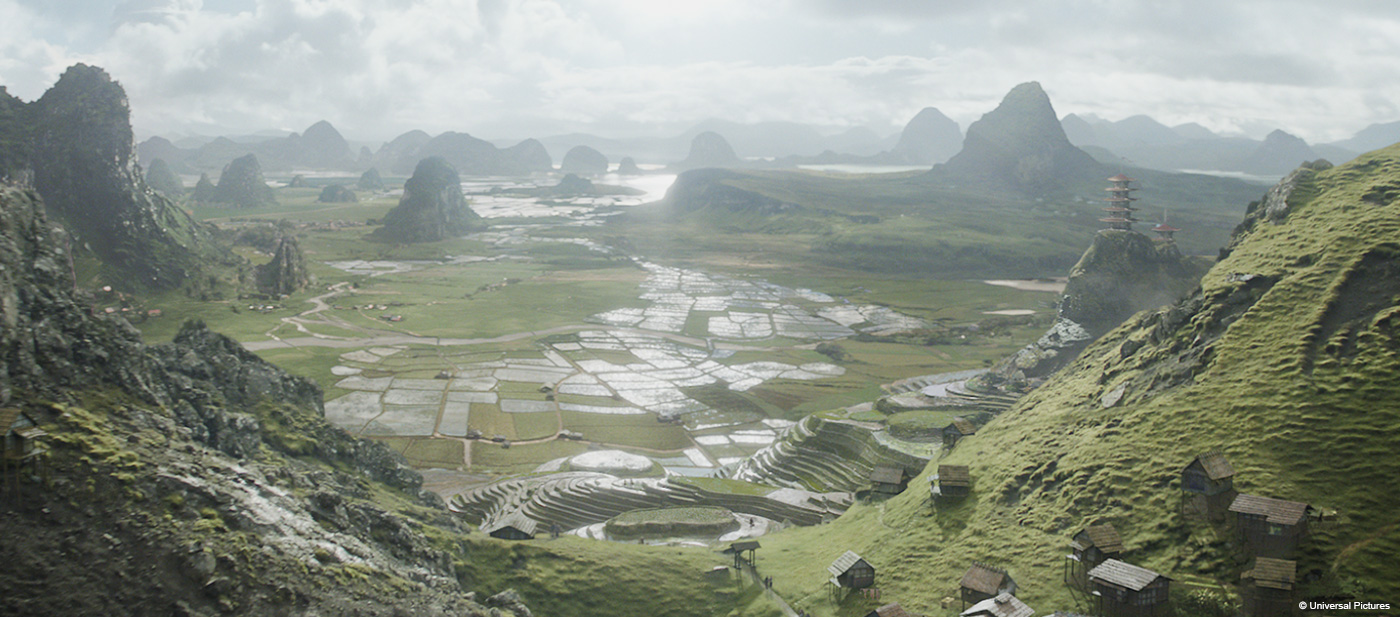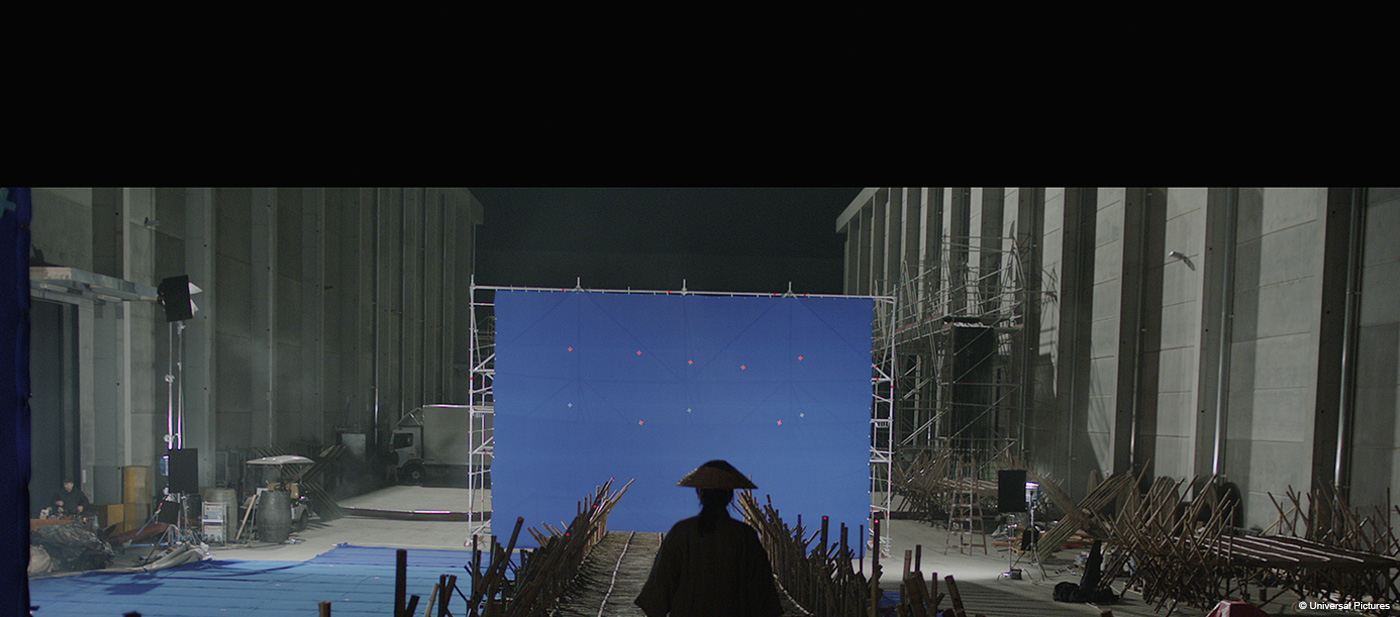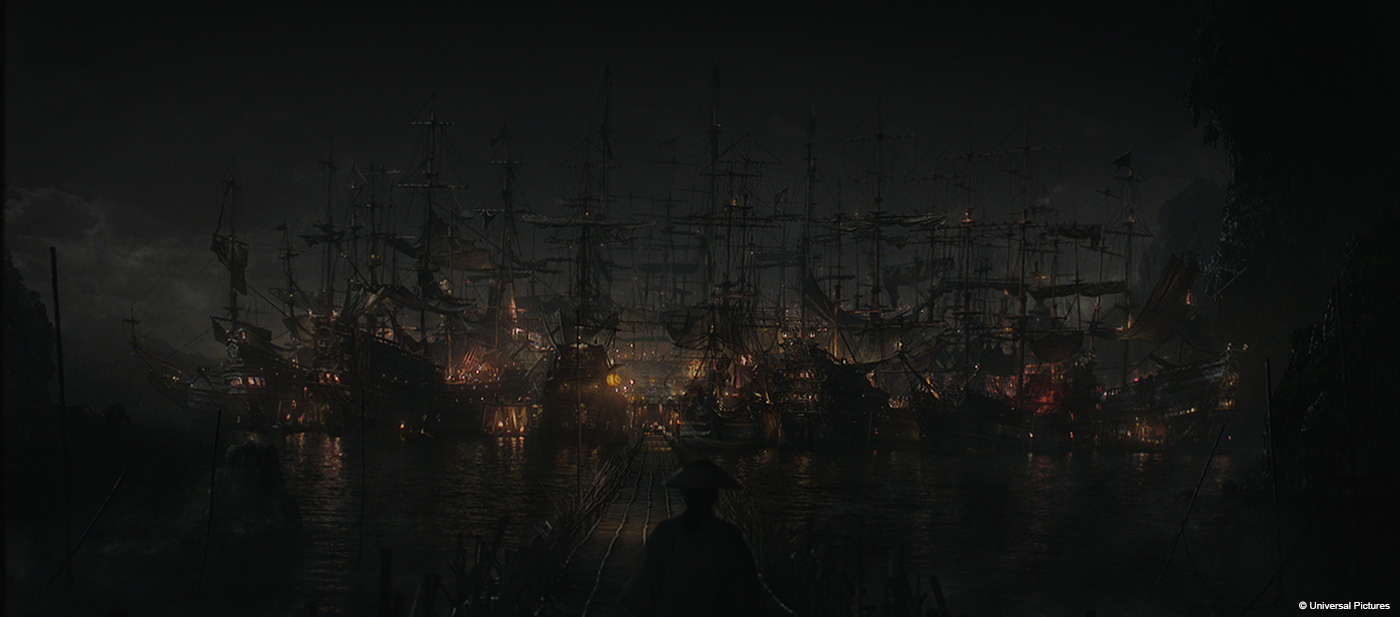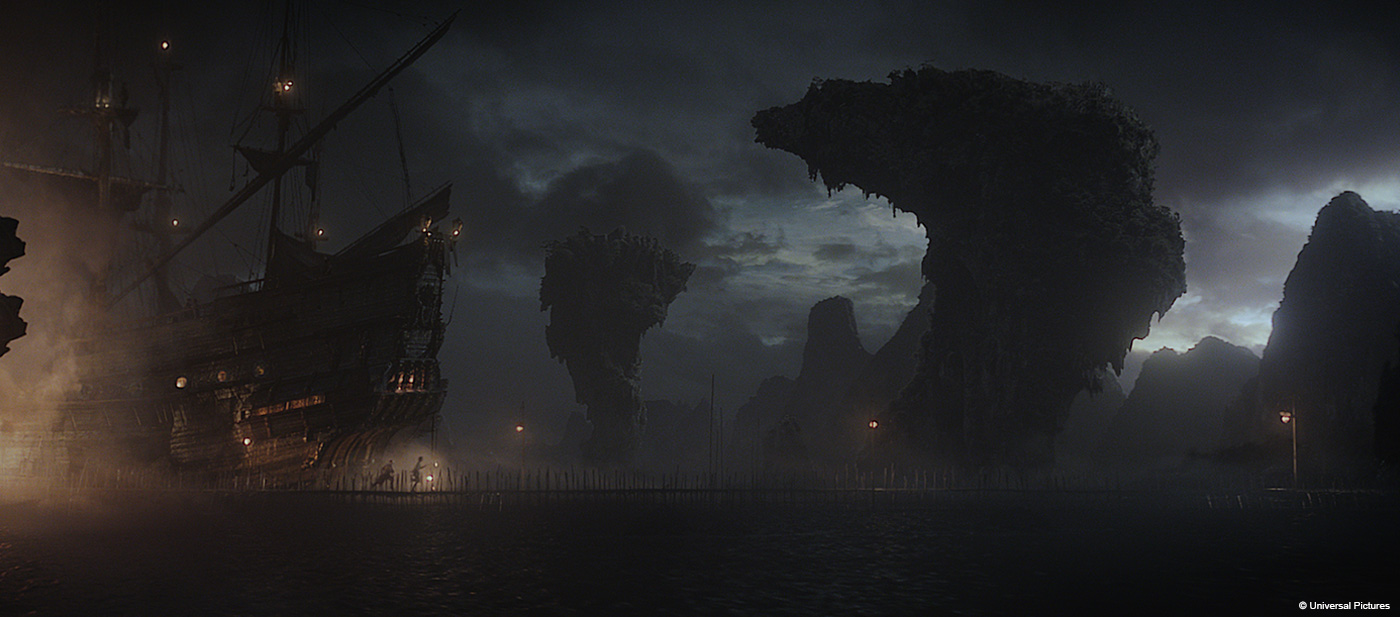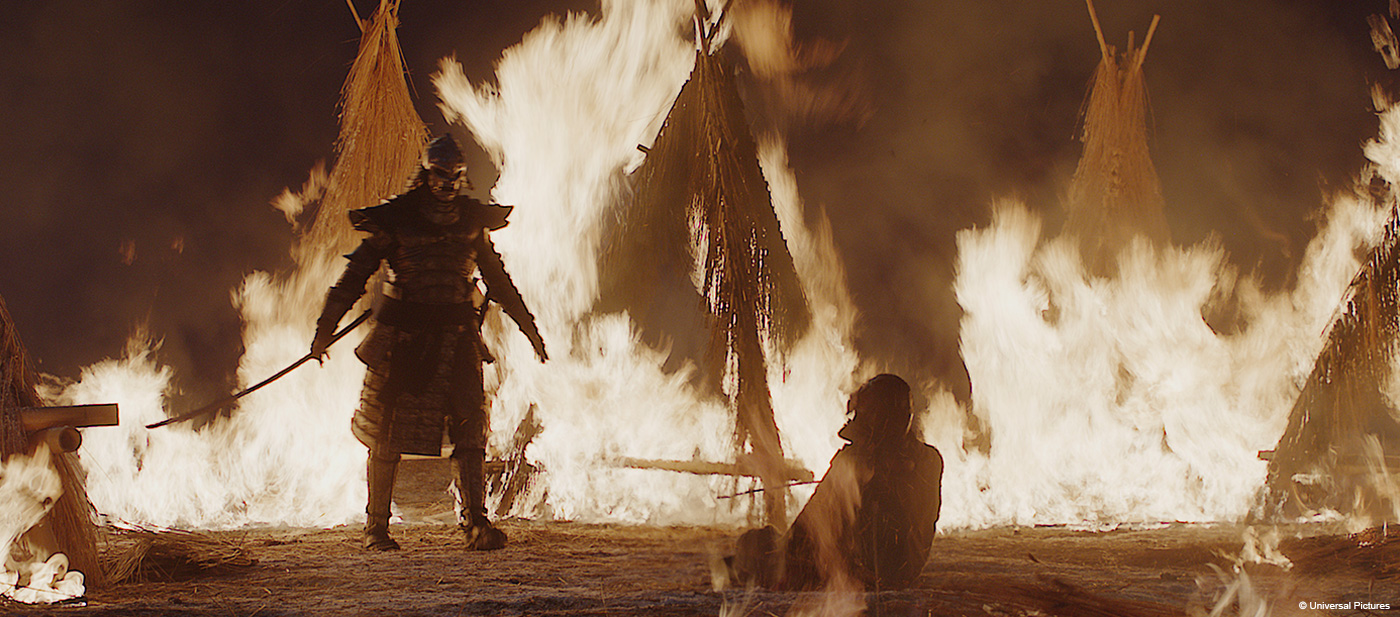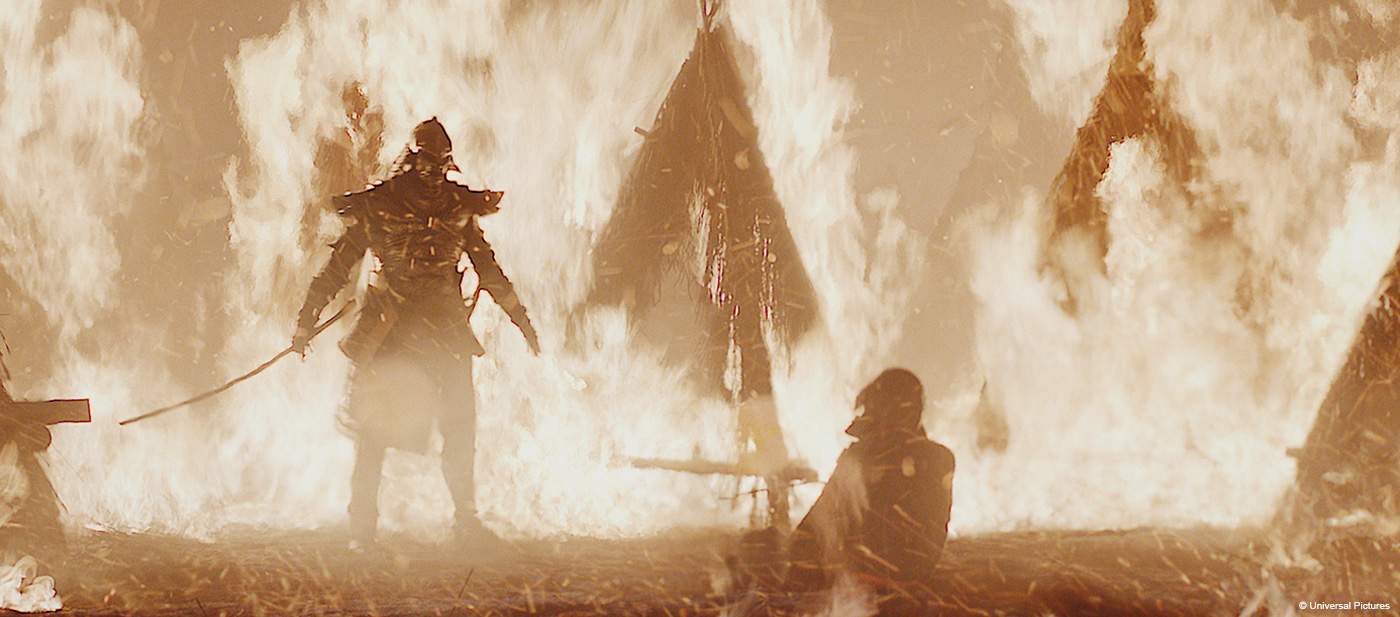In 2011, Nicolas Aithadi had explained to us in details the work of MPC on X-MEN: FIRST CLASS. This time, he talks about his work on 47 RONIN.
How was your collaboration with director Carl Rinsch?
We had a couple of discussions before the shoot and a couple during principal photography where he explained to me the way he saw the film, but during post production it was mainly with Christian Manz with whom I had a great collaboration.
What was his approach about the visual effects?
Carl knows visual effects from his work in commercials and he knew it would be used intensively. Although I’m not sure he realised the speed difference between a commercials and film pipeline.
How did you work with Production VFX Supervisor Christian Manz?
We had a great working relationship and I really enjoyed working with him and exchanging ideas.
What was your role on this project?
I was the Visual Effects Supervisor for MPC. As always my role is to make sure I convey the director’s vision through to the final image, in time and on budget.
Can you describe to us one of your typical day?
My day consist of briefing artists and reviewing their work. It may sound a little boring, but what you create as a team is very exciting.
How did you approach the Oni demon sequence?
Originally the idea was to shoot a 7 ft tall stand in and later to rotoscope him and replace him with our 7 feet tall creature. But it didn’t turn out that way.
Can you tell us more about the Oni demon design?
When we started working on Oni the production team had already designed the creature and it was very different from the one in the film. As always with these kind of things, there’s a great deal of changes that occur during production. The first element that warranted a change was the fact that the Oni was supposed to fight with a very specific weapon (A kusarigama) we decided to give the Oni some more human proportions. Then Christian gave us a back story for the Oni as a creature that would have been held captive for a long time, that would have fought many times and would have been wounded and not cared for by his jailors. These elements prompted us to re-design the creature taking all this information into consideration. The Oni became this massive disfigured creature covered in scars. Later the design would evolve again when Carl decided to make the Oni a little bit less pitiful and scarier. We removed the disfiguration and gave him a more demonic face while keeping the idea of a creature held against his will and fighting for the entertainment of Dutch Pirates. A great deal of the design credit goes to MPC modeller Leandre Lagrange who was instrumental in creating a fantastic character.
How did you create the rigging for the Oni demon?
I’ll let our Rigging lead Dan Zelcs talk about this aspect of the character.
“Rigging Oni presented the challenge of creating realistic fat and flesh on a character very close to camera. The character design evolved throughout the project, becoming more athletic, but the underlying anatomy and techniques remained the same.
We developed a proprietary volume simulation solver to help create dynamic muscle and fat layers on Oni. This ‘Cyclical Kinematics Solver’, or ‘ckSolver’, allowed us to design and simulate thousands of mass-spring relationships, using polygon primitives to shape the spring networks. Deep muscle primitives driven by bones would then connect to subcutaneous fat primitives which would in turn drive the skin surface. The solver parameters were guided by a motion capture shoot of an actor matching Oni’s physique, allowing us to observe and reproduce realistic flesh dynamics. The bone mechanics below the muscles were built using fluoroscopy footage and physiology literature as reference.
On top of the bones and muscles we applied multiple layers of cloth simulation at varying levels of detail to create complex folds and fine wrinkles of skin, using nCloth and syflex. The costume was tailored and simulated using third party software, Marvelous Designer, as a starting point, then layered with details using nCloth.
The facial performance was shot in-house using videogrammetry marker tracking technology in a 4 camera setup, then retargetted to Oni’s physiology using MPC’s custom toolset. On top of this we provided animators with our standard FACS blendshape set to nuance the performance further where needed.”
How did you handle the animation and lighting?
The Animation was entirely keyframed. We contemplated the idea of using Mocap, but we quickly realised that it would be impossible to get what we wanted out of it and that we would have to alter it so much that it would beat the purpose of using it. We also couldn’t rotoscope the Stand-in as the fight style didn’t match the new design of the Oni. Julio del Rio Hernandez led a team of animators who did a great job in giving the Oni a mix of powerful rage and helplessness. I really like the way the animation turned out.
The lighting was quite straightforward, what was critical was to get the right skin quality. We had an extra challenge as the Oni was supposed to be red. We didn’t want a Hellboy red, we wanted something that you wouldn’t question, that said we didn’t want the Oni to look sunburned.
The solution to that problem was skin diseases. We thought that the best way to give him the red skin required would be to give every kind of skin problem we could. Coupled with all the scars we ended up with quite a red Oni but without making him look like a cartoon character. Matthew Ovens and Laszlo Mates our 2 lighting lead were responsible for bringing the Oni to light.
How was simulated its presence on-set?
Production used a 7 ft tall actor to interact with Keanu during filming.
Can you explain in details about the creation of the Dutch Island?
Dutch island was a challenge in itself. The live action part was shot on a stage in Budapest; Oishi walks across a bridge towards the island, this was shot on a section of bridge in front of a bluescreen. A section of the walkway as well as pieces of ships were built and dressed there. Our task was to augment these practical sets wherever it was needed; this included vertical extension as well as In depth. The set pieces were Lidar scanned and photographed.
Once at MPC we used all these sections of boat to create complete ones filling the blank using photographic reference of real ships. We needed 21 boats in total to complete the island and we needed each to be different. After the island was built and laid out, the environment team led by Alexandru Popescu matte painted the whole thing. It wasn’t a standard matte painting where you’re painting everything
Ie: Lighting and shadows. It was closer to making textures. They were matte painting colour, specular and displacement maps they were then using those maps and rendered the environment and touched up the renders to complete the final image. Our crowd team populated the island with sailors and women while our tech Animation team were busy creating sails and ropes and all the rigging you may imagine that is required to dress 21 boats. We also created the ocean surface and the bridge extension.
What references and indications did you received from the director for the various environments?
Carl had a very clear idea of what this movie would look like. He always equated it to a western. He didn’t want a realistic representation of Japan, it had to be a mix between the grittiness of a good western and a mystical, fantastical rendition of a folkloric Japan hence the rain and fog and the strange landscapes.
Can you tell us more about the Samurai tournament environment?
This set evolved a lot during post production. When it was conceived the extension was limited to some tents and the landscape. Later Carl thought that it was lacking scope and that it felt a bit empty so they asked us to extend the set and the crowd.
How did you created the circle of fire for the ambush?
Very early we’ve decided with Christian Manz to go with live action elements, we tested it to make sure that it would be a viable technique in Stereo and it turned out perfect so we ran with it. In some complex shots with more 3D movement we added a layer of CG fire. The trick was to combine various elements from a number of sources and make them look like they belonged there and that they were all shot at the same time. Bronwyn Edwards our Comp supervisor has to get the credit for that. It was a complex sequence to handle.
What was the biggest challenge on this project and how did you achieve it?
Without a doubt, the Oni!
Was there a shot or a sequence that prevented you from sleep?
The Oni was the most challenging work we had to do, but designing Dutch Island was quite the undertaking. Nothing really kept me awake, this are what we strive for, new challenges, you’ve got to love that.
What do you keep from this experience?
It was a very interesting project, especially because of the Oni, it allowed us to invest a lot of time and effort on complex photorealistic rigging and skinning, I enjoyed that very much.
How long have you worked on this film?
Including the reshoot, we were involved for two and a half years, which is quite a long time these days.
How many shots have you done?
We worked on around 250 shots.
What is your next project?
At the moment I’m working on GUARDIANS OF THE GALAXY, but I can’t say anything about that (laughs).
A big thanks for your time.
// WANT TO KNOW MORE?
– MPC: Dedicated page about 47 RONIN on MPC website.
© Vincent Frei – The Art of VFX – 2014

